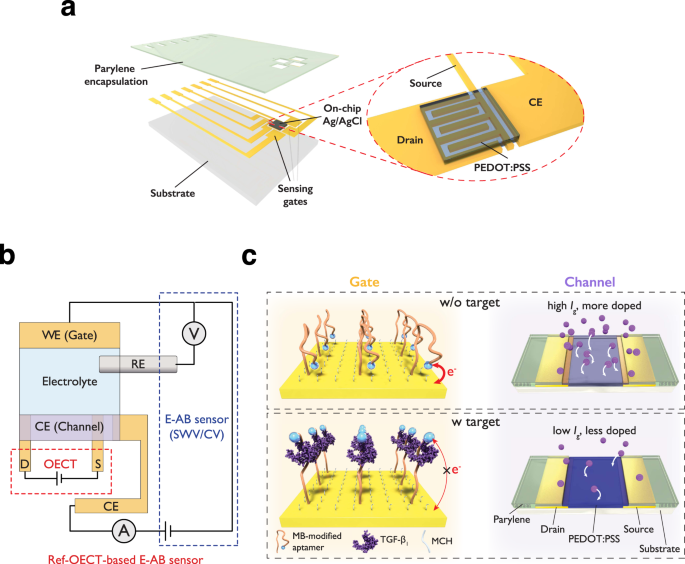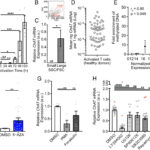高感度バイオエレクトロニクス診断への道を拓く新技術を開発 New technology paves way for sensitive bioelectronic diagnostics
2023-03-31 ノースウェスタン大学
これにより、高感度で実時間の信号を検知できるようになるため、健康問題をより早く認識することができるようになり、治療法をより正確に調整することができるようになる。この研究は、Nature Communications誌に掲載された。
<関連情報>
- https://news.northwestern.edu/stories/2023/03/plastic-transistor-amplifies-biochemical-sensing-signal/
- https://www.nature.com/articles/s41467-023-37402-2#Abs1
電気化学アプタマーを用いたセンシングのためのオンサイト信号増幅器としての有機電気化学トランジスター Organic electrochemical transistors as on-site signal amplifiers for electrochemical aptamer-based sensing
Xudong Ji,Xuanyi Lin & Jonathan Rivnay
Nature Communications Published:25 March 2023
DOI:https://doi.org/10.1038/s41467-023-37402-2

Abstract
Electrochemical aptamer-based sensors are typically deployed as individual, passive, surface-functionalized electrodes, but they exhibit limited sensitivity especially when the area of the electrode is reduced for miniaturization purposes. We demonstrate that organic electrochemical transistors (electrolyte gated transistors with volumetric gating) can serve as on-site amplifiers to improve the sensitivity of electrochemical aptamer-based sensors. By monolithically integrating an Au working/sensing electrode, on-chip Ag/AgCl reference electrode, and Poly(3,4-ethylenedioxythiophene)-poly(styrenesulfonate) counter electrode — also serving as the channel of an organic electrochemical transistor— we can simultaneously perform testing of organic electrochemical transistors and traditional electroanalytical measurement on electrochemical aptamer-based sensors including cyclic voltammetry and square-wave voltammetry. This device can directly amplify the current from the electrochemical aptamer-based sensor via the in-plane current modulation in the counter electrode/transistor channel. The integrated sensor can sense transforming growth factor beta 1 with 3 to 4 orders of magnitude enhancement in sensitivity compared to that in an electrochemical aptamer-based sensor (292 μA/dec vs. 85 nA/dec). This approach is believed to be universal, and can be applied to a wide range of tethered electrochemical reporter-based sensors to enhance sensitivity, aiding in sensor miniaturization and easing the burden on backend signal processing.


